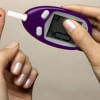A growing health risk for young people

We are concerned about the increasing number of young people battling with diabetes in Bangladesh. According to a recent study, seven out of every 100 people aged 15-35 now face this severe health challenge. This may seem surprising at first, but when we look at our increasingly sedentary lifestyle, it is quite evident why this disease has become so prevalent.
Around 1.3 crore people are living with diabetes in the country, and that number is projected to be 2.23 crore by 2045. Against this backdrop, the study found that 26.5 percent of the young population have an obesity problem—a risk factor for the disease—and around 61 percent don't show symptoms despite having diabetes. Those who don't walk for more than 30 minutes daily and don't control their food intake are more susceptible to diabetes. The question is, do most people, especially in our congested cities, even have the opportunity to be physically active or eat healthy?
Over the last three decades, green areas like parks, playgrounds, and urban forests have shrunk by 66 percent in locations under Dhaka North City Corporation. At the same time, grey or urban spaces increased by almost 95 percent from 1992 to 2022. The choice left for most people then is to walk on what concrete space is available, but that too may be cumbersome at times. Walkable footpaths are either absent or mostly dilapidated. Further compounding the problem is the lack of mobility because of traffic congestions, preventing many from going outdoors, as well as the boom of the entertainment industry, making many glued to their screens.
As for food habits, another study has shown that one in eight people cannot afford a nutritious diet in Bangladesh. As food inflation remains sky-high—12.56 percent till October—people, when outdoors, resort to cheap, processed meals full of sugar and salt, or plenty of rice, exposing themselves to risks of diabetes. Reportedly, around two-thirds of packaged food contains unhealthy levels of salt, and around 97 percent of people consume such food, which mostly contain junk calories, twice a day.
Experts say that 70 percent of diabetes cases are preventable if the right measures are taken, which, unfortunately for us, seems increasingly unfeasible. The situation calls for comprehensive measures: while city corporations must ensure availability of open spaces, the government must bring food prices down. Furthermore, the authorities may consider imposing additional tax on high-calorie food and beverages—as is the norm in many countries—and nutritional labels at fast-food restaurants must be mandatory. If such steps are taken, the rise in diabetes among the young may be largely contained.

 For all latest news, follow The Daily Star's Google News channel.
For all latest news, follow The Daily Star's Google News channel. 









Comments